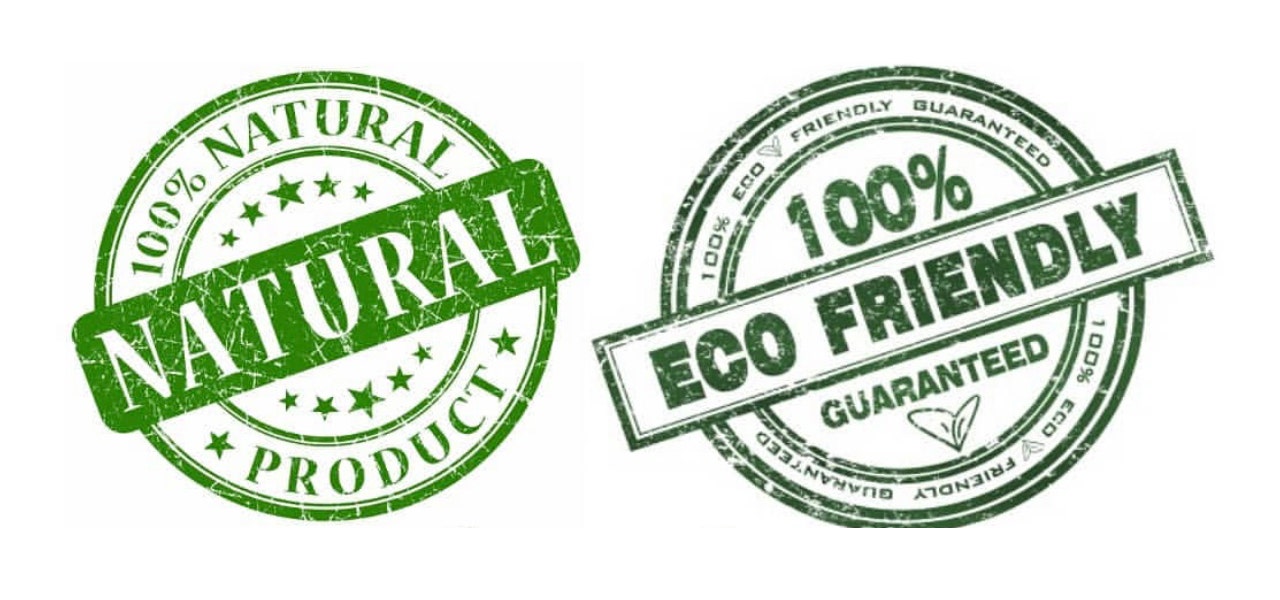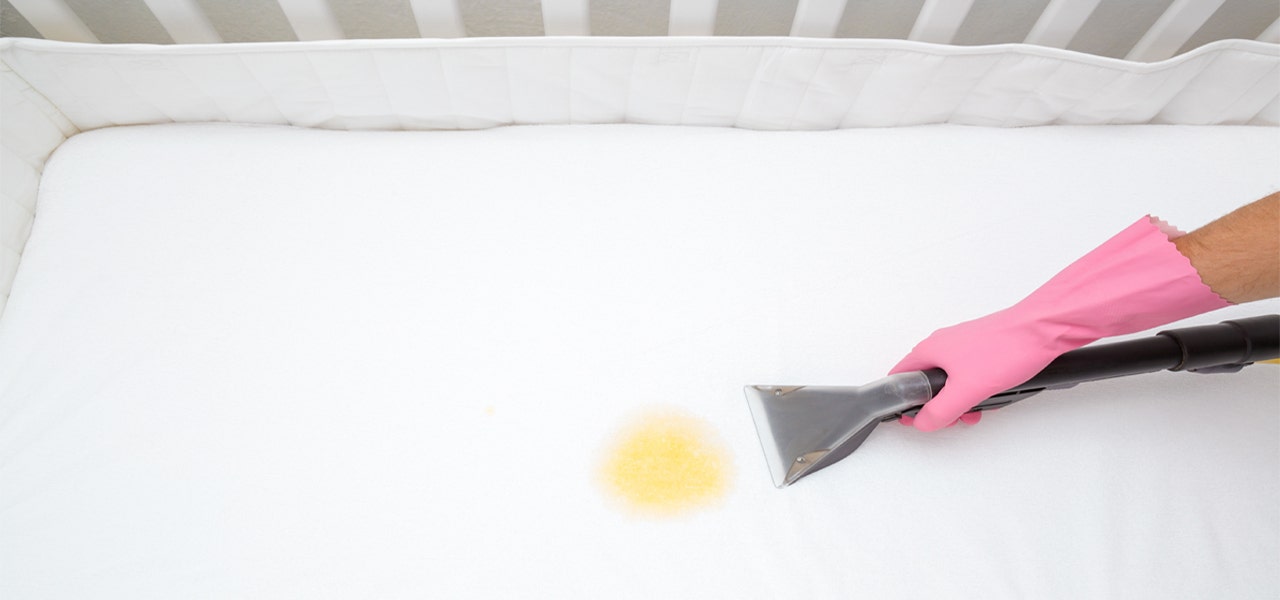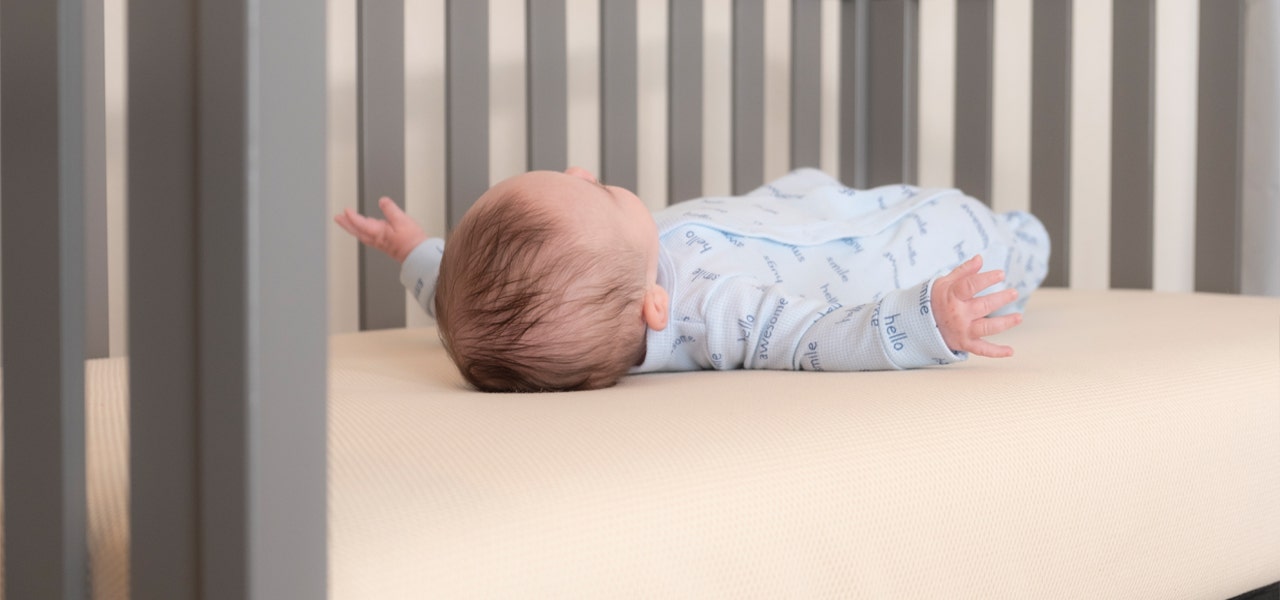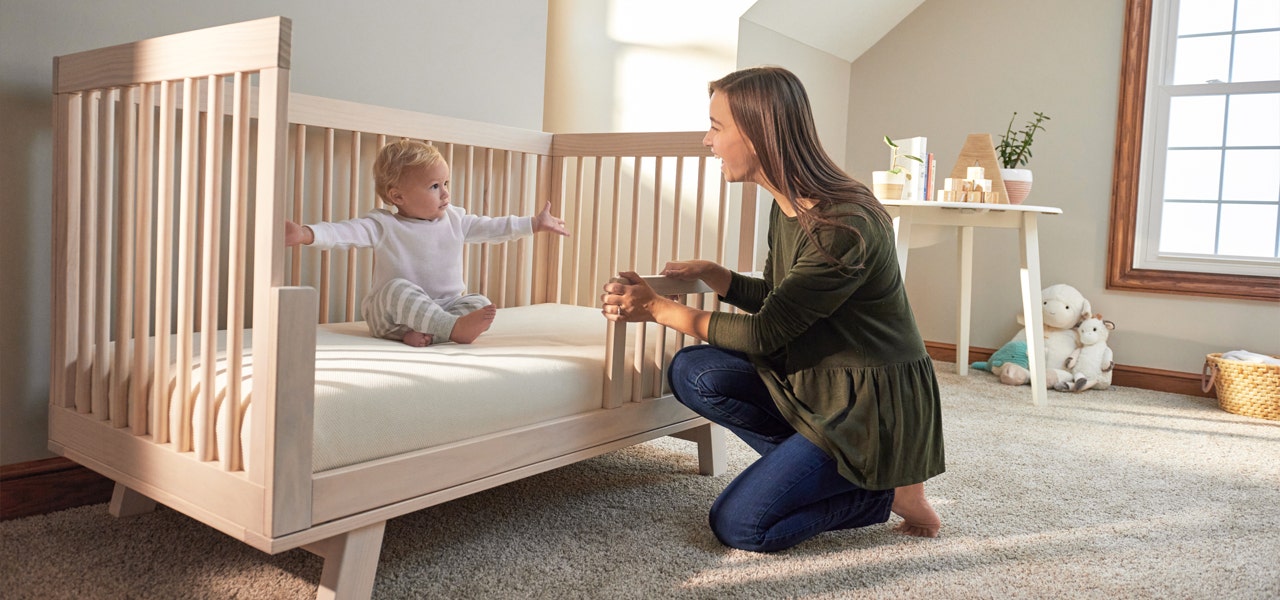When it comes to crib mattresses, there are a lot of “dos and don’ts.” That’s because your crib mattress is key in ensuring baby crib safety. Not only do you need to consider features like breathability and waterproofing, but you also need to make sure that a crib mattress is made with safer, healthier materials.
Unfortunately, despite the plethora of crib mattress options on the market, very few of them are fully transparent about their materials and models, which doesn’t make understanding the “Dos and Don’ts” easy. Here’s the first “don’t” we want to share: Don’t panic! Naturepedic knows a lot about crib safety standards, and we’re happy to help.
Let’s go ahead and dig into what you should look for and what you should avoid with crib mattresses – starting with the Don’ts.
Improve Crib Safety with our Top Five Crib Mattress Don’ts
Here are our top suggestions for what not to do when shopping for a crib mattress.
1. DON’T Believe Misleading, Frivolous Language
There are no rigorous standards surrounding a company’s ability to use marketing claims like “all natural,” “eco-friendly” and “safe.”


These words are not only ambiguous, but they also often refer to only one part of a product rather than the integrity of the whole item.
Words like these are intentionally vague; for instance, a company might call its crib mattress “safe” because it is firm, but neglect to ensure that it is made without common crib mattress materials like formaldehyde! Don’t fall for logos that are placed on packaging to look like certifications, either. This is a typical greenwashing tactic.
2. DON’T Fill Your Crib with Toys, Blankets or Pillows
Putting your child to bed with items like toys, blankets and pillows can be a big safety hazard. You should wait until your child is at least 12 months old and has developed motor skills before leaving them with a blanket. Additionally, you should wait until they have made the transition to a bed before giving them a pillow.
3. DON’T Purchase a Crib Mattress with Questionable Chemicals
You’ve probably heard the rule when it comes to food: don’t buy anything with an ingredient you cannot pronounce. So why would you buy a mattress made with chemicals like phthalates and antimony trioxide?
Unfortunately, most crib mattresses on the market are filled with questionable chemicals and materials, like the above endocrine-disrupting plasticizer and harmful flame retardant, and it’s not exactly easy to decipher what is being used. That’s why Naturepedic uses third-party certifications to ensure that our mattresses are made of only high-quality, organic and healthier materials.
4. DON’T Purchase a Crib Mattress Made with Allergenic Materials
When a baby is born, we don’t know what they are allergic to. That’s why, as they slowly adjust to the world, it is beneficial to reduce the risk of allergic reactions as much as possible. Unfortunately, many crib mattresses use potentially allergenic materials like latex and wool. Avoid these materials when choosing a crib mattress for your little one, even if they’re organic!
5. DON’T Choose a Breathable Crib Mattress that Isn’t Waterproof


Breathable crib mattresses are great, but they should also be waterproof so that the inevitable messes can be cleaned simply by wiping the surface. This will prevent the growth of mold, bacteria, mildew and fungi more effectively. Check to see if the breathable crib mattress is fully waterproof or just “water-resistant,” as this can make a big difference in keeping it hygienic. Of course, you’ll also want to check that the waterproofing materials are made without vinyl/PVC and phthalates.
Feel More Confident with these 5 Crib Safety Dos:
Right, so now that you have a handle on what not to do, let's run through what you do want to make sure you're doing.
1. DO Look for Reputable Certifications
The Global Organic Textile Standard (GOTS), EWG VERIFIED® and MADE SAFE® certifications are a great place to start. The GOTS label ensures that a product is certified organic, and marks products that prioritize ecological and social sustainability. It measures impact across the entire supply chain, from processing to distribution.
The EWG VERIFIED: Mattresses cerification vets products for health, transparency and good manufacturing processes. The MADE SAFE label is for products that have been screened against a list of thousands of chemicals known or suspected to be harmful towards human health. Looking for labels like these will ensure that that you're purchaing a crib mattress that has been vetted by reputable, third-party organizations.
2. DO Make Sure Your Crib Mattress Is Firm


The American Academy of Pediatrics (AAP) recommends a firm crib mattress for optimal crib safety. This helps reduce the risk of suffocation, which can occur when a child who has not yet developed motor skills sinks into a soft mattress and cannot escape its folds.
This article further explains why and how to test a crib mattress for firmness. Naturepedic’s breathable crib mattresses meet all pediatric guidelines for proper firmness, and even include a 2-stage dual firmness feature, allowing you to flip your mattress as your baby becomes a toddler and can handle slightly softer bedding.
3. DO Limit Exposure to Harmful Chemicals
As mentioned, many mattresses hide toxic chemicals and materials, like vinyl/PVC, phthalates, chemical flame retardants, formaldehyde and more. These materials off-gas unacceptable levels of volatile organic compounds (VOCs), degrading your home's indoor air quality and also negatively impacting our planet. This simply isn't safe for Baby, and it's not safe for the Earth, either! You can rely on the certifications above while you're shopping, as well as:
- GREENGUARD® Gold
- UL Formaldehyde Free validated
Learn more about Naturepedic's non-toxic approach to mattresses.
4. DO Avoid Allergy Risks, Even With Organic Material
Although it’s an ideal mattress material for providing adults with comfort, as mentioned, latex (even organic latex) can pose a major risk to children with allergies. Latex allergies in particular can develop with frequent exposure, and so throughout your child’s early life, you should closely monitor potential reactions.
You can learn more about warning signs, irritants, and emergency treatment protocols here. Naturepedic’s crib and kids mattresses are wool and latex-free, reducing the risk of your child experiencing, or developing, an allergic reaction as they sleep.
5. DO Look for an Organic, Breathable AND Waterproof Option


Again, it’s critical to make sure that if a crib mattress is breathable, it’s also waterproofed to maintain the ultimate hygienic safety for your little one. Instead of vinyl/PVC, or electing to not waterproof at all, Naturepedic uses a food-grade material made from non-GMO sugarcane to waterproof our mattresses.
As the only manufacturer to provide a breathable, waterproof and certified organic crib mattress, Naturepedic does all the thinking for you. Our breathable crib mattresses feature a removable, washable, breathable cover that allows your baby to breathe right through the surface, while also helping to dissipate heat and moisture for less sweaty backs, and a much better, safer sleep.
When accidents happen, simply remove the cover and toss it into the washing machine. Then, wipe clean the waterproof surface of the underlying crib mattress.
These days, a number of crib mattresses crowd the market, and it can be difficult to parse through all the information. But, at Naturepedic, we’re checking all the Do’s, uniting safety with sustainability, breathability and comfort. Keep learning about baby crib safety and get helpful sleep tips on Naturepedic’s Organic Baby Blog.
 BABY
BABY  KIDS
KIDS  ADULT
ADULT  LEARN
LEARN  STORES
STORES 